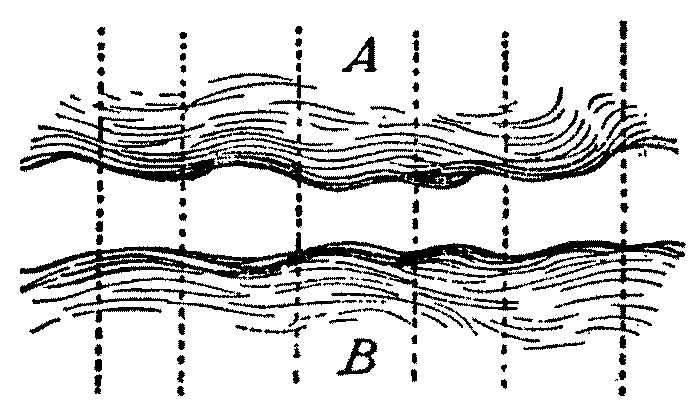Saussure introduces "arbitrariness" twice:
- in the context of his discussion of the sign and the relationship between
the 'signifier' and 'signified'
- in the context of his discussion of the linguistic organization of experience
One can start an exploration of this idea in Saussure's treatment of, first, the relationship of words to objects as it seemed at the time our brains might apprehend them.[ftn01]
Signs
The first time Saussure writes about "arbitrariness,' he does so in the context of the relationship between the signifier and the signified.

p. 61
This discussion appears to do two things that are easily shown to be unworkable as taken by themselves
-
The illustrations reify the 'mental image' or 'idea' (signified)
that is then represented by the sound (or graphic to include writing/reading
as well as speaking/hearing in the argumentation) representation (signifier).
It would appear, particularly when the example uses such apparently unproblematic
objects as dogs or trees, that the signified is a non-linguistic event, whether
a Platonic form or an internal meaning. This is the aspect of Saussure that
Derrida could most easily criticize (even though Saussure opens the chapter
with a critique of the proposition that ideas precede words).
- The illustrations do little to index the issues of the relationships between signs, something that Saussure then proceeds to address at length
However the opening pages on the sign must precisely not be lifted out of the total text and made to stand on their own.
First, one must understand how the analysis of the sign can be used in phonology where signifying phonemes are built by bringing together in an altogether arbitrary fashions various articulatory or graphic possibilities to make distinctions on which meaningful syntagms (in this case 'words') can be built.
- "Alleluia": a brief example and expansion.
Second, one must pay close attention to the discussion of "linguistic value" in Chapter IV.
Language and Thought
Saussure briefly sketches a powerful argument summarized in a simple statement and a diagram.
Without language thought is a vague, uncharted nebula. There are no pre-existing ideas, and nothing is distinct before the appearance of language. (p. 112)
Not only does this discussion provide the foundation for all (post-)structuralisms, but it allows for the fundamental convergence of American cultural anthropology with Saussure on which Lévi-Strauss insisted but which was mostly lost in the symbolic anthropologies that were built over Geertz's critique of Lévi-Strauss.
In the diagram, 'A' represents the "uncharted nebula" of pre-linguistic thought. 'B' represents the continuum of vocal possibilities presented to human beings by their biology (the range is even broader if one adds all visual possibilities to the auditory ones). The vertical lines represent the arbitrary distinctions that are made in both continua and their relationships both within and across what we might talk as various 'media' (it may not be literally Saussurian to think about thought or the brain as a medium, but recent development about human beings as 'cyborgs' might allow this)
 p.113
p.113
Colors
The best and most classic example of this is the analysis of human physicical perception of light (which must be that of a continuum) in relation to color vocabularies that segment the 'rainbow' into any number of colors.

Violet, Indigo, Blue, Green, Yellow, Orange, and Red ???
From Boas onwards cultural anthropologists have emphasized the various ways that languages around the world use to express this rainbow in their vocabularies.
There has been serious controversies about the extent to which color vocabularies can be said to be "arbitrary." The central argument against simple relativism was made by Berlin and Kay (1969). There is every evidence that human beings all perceive color in the same way (which would relate to what the Boasian referred to as the "psychic unity of manking") and that there is an ordering in the development of more complex color vocabularies. The state of the controversy is summarized by Nicola Jones (2017).
The simple Saussurian statement of semiotic arbitrariness however raises two sets of issues:
- as stated the statement leads to a sole concern with the relationship between perception and cognition. It does not easily open to an understanding of the interactional aspects of vocabularies in use.
- as sketched by Saussure, the sociology of arbitrariness refers only to a "kind of contract" thereby referring back to Durkheim and Rousseau. However the very use of the word "arbitrary" with its non-consensual connotations, appears to call for what became discussions of "hegemony," that is a discussion of the issues of power (both interactional and political) that must be involved for a particular arbitrary pattern (a langue or culture) to maintain itself.
On the way to addressing these issues, we must first consider
semiotic arbitrariness in less stereotyped contexts than color vocabularies.
![]()
ftn01: Of course this initial statement was radically criticized later, starting with Derrida ().